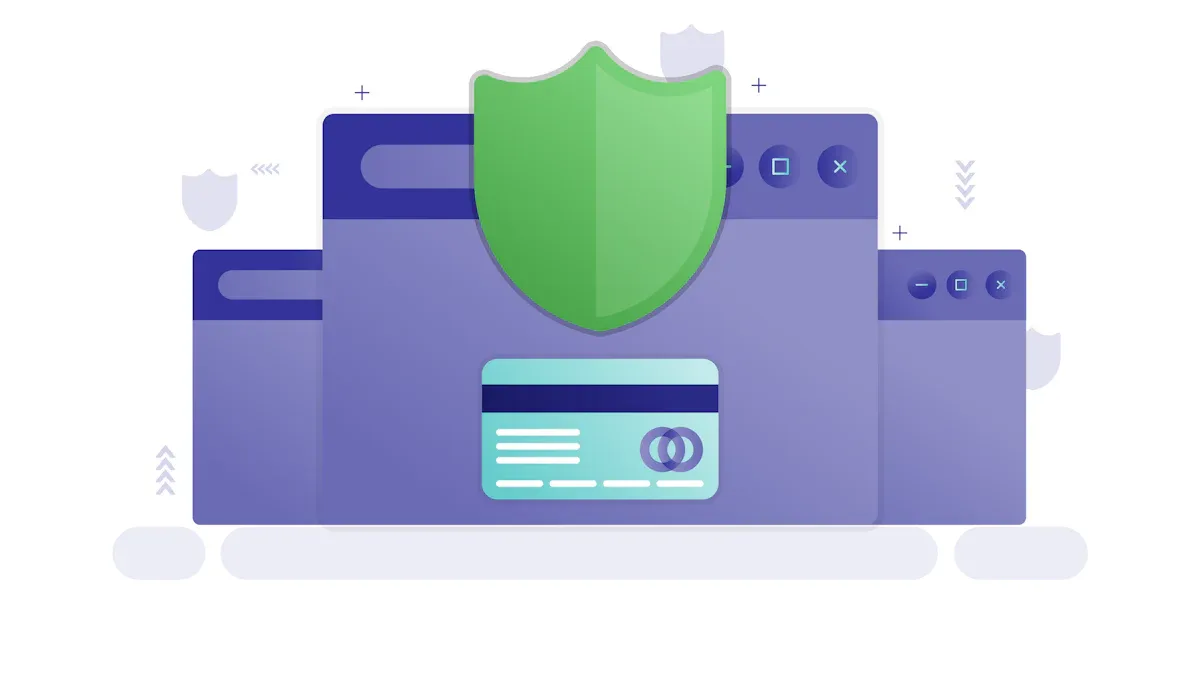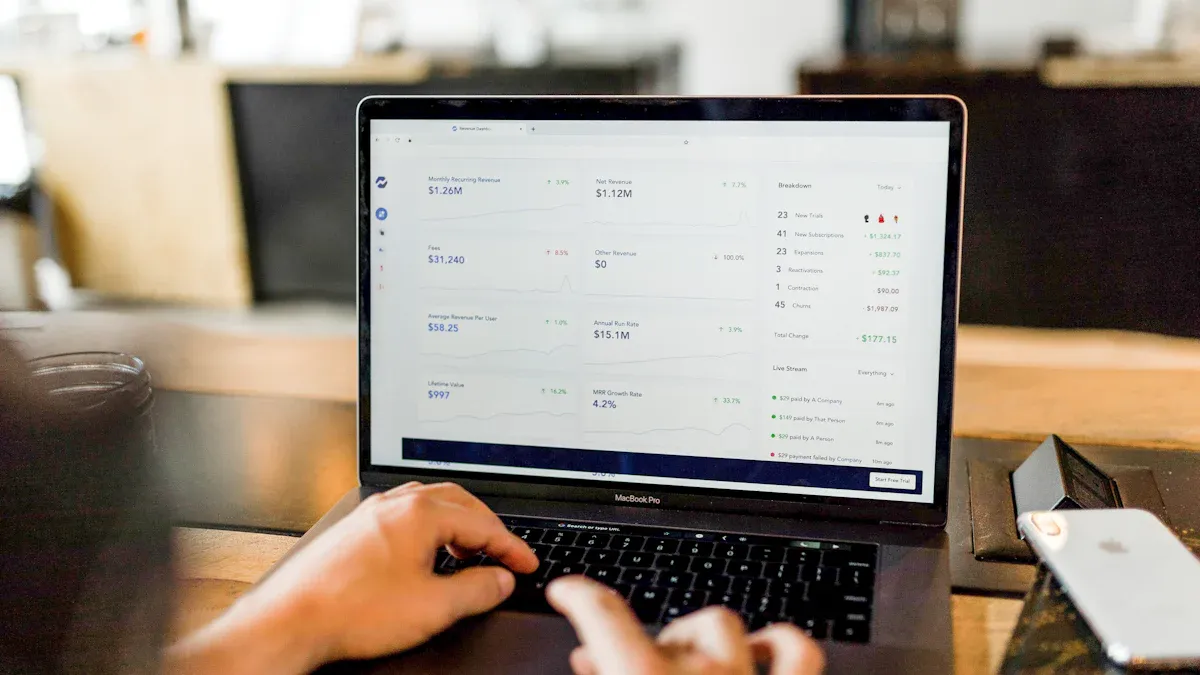- EasyCard
- Trade
- Help
- Announcement
- Academy
- SWIFT Code
- Iban Number
- Referral
- Customer Service
- Blog
- Creator
Formatting IBAN: How to Correctly Use the International Bank Account Number to Ensure Secure Money Transfers

Image Source: unsplash
Correctly using an International Bank Account Number (IBAN) is the primary prerequisite for secure and fast international transfers. Did you know? Up to 50% of delayed or failed transfers stem from simple data entry errors. As a global standard, the adoption of IBAN has significantly increased transaction processing speed. Therefore, learning how to correctly format an IBAN is a critical step in ensuring your funds arrive safely.
Key Points
- IBAN is an International Bank Account Number that helps funds reach the recipient’s account securely and quickly.
- IBAN has a specific structure, including a country code, check digits, bank code, and account number.
- For online transfers, IBAN must not contain spaces; IBANs on paper documents typically include spaces but cannot be directly copied for use.
- You should obtain your IBAN through official bank channels and verify its validity using online tools before making a transfer.
- IBAN and SWIFT/BIC codes are different; IBAN identifies the account, while SWIFT/BIC identifies the bank, and both are crucial for international transfers.
Definition and Standard Structure of IBAN
To use an IBAN correctly, you first need to understand its definition and standard structure. An IBAN is not a random string of numbers and letters but a carefully designed system. It was introduced by the International Organization for Standardization (ISO) under the ISO 13616 standard in 1997 to standardize global bank account identification, thereby reducing human errors in cross-border transactions. Today, over 80 countries and regions worldwide have adopted the IBAN system, making it an indispensable part of international transfers.
Breakdown of IBAN Structure
A complete IBAN consists of four consecutive parts, each with a specific function. Its total length varies by country, typically ranging from 15 to 34 characters. Let’s take a German IBAN as an example to break down its structure:
DE75 5121 0800 1245 1261 99
- Country Code: The first two uppercase letters identify the country where the account is located. For example,
DErepresents Germany,FRrepresents France, andGBrepresents the United Kingdom. - Check Digits: The two digits following the country code are a core security feature of the IBAN. They are calculated using a special algorithm called MOD97, which quickly verifies the accuracy of the entire IBAN string, effectively preventing transfer failures due to input errors.
- Bank Identifier: This part identifies the specific bank where the recipient’s account is held.
- Basic Bank Account Number (BBAN): The remaining part of the IBAN, akin to the bank account number commonly used in mainland China, includes branch codes and personal account numbers.
To help you understand more clearly, here are examples of IBAN structures for several major countries:
| Country | Length | IBAN Example | Structure Breakdown |
|---|---|---|---|
| Germany | 22 | DE75512108001245126199 | DE (Country) 75 (Check) 51210800 (Bank Code) 1245126199 (Account Number) |
| France | 27 | FR7630006000011234567890189 | FR (Country) 76 (Check) 30006 (Bank) 00001 (Branch) 12345678901 (Account) 89 (Check) |
| United Kingdom | 22 | GB33BUKB20201555555555 | GB (Country) 33 (Check) BUKB (Bank Code) 202015 (Branch Code) 55555555 (Account Number) |
How to Correctly Format an IBAN
The correct method for formatting an IBAN depends on the usage scenario: online input or paper printing. Confusing these two formats is one of the most common causes of transfer issues.
Electronic Format
When making international transfers through online banking or a mobile app, you must use the electronic format.
Key Tip: The electronic format of an IBAN is a continuous string without any spaces or special characters. You need to manually remove all spaces from the IBAN provided by your bank.
For example, a paper-printed IBAN may appear as GB33 BUKB 2020 1555 5555 55. For an online transfer, you must enter: GB33BUKB20201555555555
Print Format
The IBAN you see on bank statements, invoices, or official documents is typically in the print format. This format is designed for easy human reading and verification. Its characteristic is grouping every four characters with a space in between.
Print Format Example:
DE75 5121 0800 1245 1261 99
Please note that this spaced format is only for reading and should never be directly copied and pasted into the input field of an online transfer system. Before taking any action, always carefully check and correctly format the IBAN to ensure the funds are secure.
Practical Methods for Finding and Validating an IBAN

Image Source: unsplash
After understanding the structure and formatting rules of an IBAN, the next step is to accurately find and validate it. This process is straightforward, but you must operate through official channels to eliminate any information errors. A single incorrect digit could send your transfer in the entirely wrong direction.
Official Channels for Finding Your IBAN
The safest way to obtain your own or the recipient’s IBAN is always through official bank channels. Avoid using unofficial online generators or guessing. Here are the most reliable methods:
- Check Bank Statements: Your bank will periodically send paper or electronic statements. The IBAN is typically clearly printed in the account information section, alongside your name and local account number. This is one of the most direct ways to verify information.
- Log into Online Banking or Mobile App: This is the fastest way to obtain an IBAN. Most banks provide complete account details on their digital platforms.
Guide: After logging into your online banking or mobile app, navigate to “Account Details,” “Account Information,” or a similar section. Your IBAN is typically listed alongside the SWIFT/BIC code. For example, when using the online banking service of a licensed Hong Kong bank, you can click “View Details” on the account overview page, and the system will display all the information required for international transfers, including the IBAN.
- Contact Bank Customer Service Directly: If you cannot find the IBAN through the above channels or are unsure about the accuracy of the information, the safest approach is to call the bank’s customer service hotline or visit a branch in person. Bank staff can provide the most accurate account information.
Validating IBAN Online
The final step before initiating a transfer, and a critical one for ensuring fund security, is to validate the IBAN’s authenticity using online tools. This step can help you catch potential input errors before the funds leave your account.
Online IBAN validation tools do more than just check if the IBAN is correctly formatted. A robust validation tool performs multiple checks:
- Check Digit Verification: It uses the MOD97 algorithm to verify the IBAN’s check digits, which is the first line of defense for ensuring its integrity.
- Structure and Length Check: The tool confirms whether the IBAN’s length and structure comply with the specific standards of the target country/region.
- Bank Code Identification: For many countries (e.g., Germany, Switzerland, the Netherlands), validation tools can also identify the bank code within the IBAN and even return the corresponding bank name and BIC code for secondary confirmation.
Security Tip: Protect Your IBAN: Although IBAN itself is not defined as “sensitive payment data” by regulations (such as the EU’s PSD2 directive), its leakage still poses risks. Fraudsters may combine your IBAN with other personal information to carry out fraudulent activities. Therefore, share your IBAN only with trusted recipients and always verify its accuracy before each transaction.
Spending one minute on validation before a transfer can save you days or even weeks of processing time and unnecessary hassle.
Key Differences and Common Questions About IBAN

Image Source: unsplash
Now that you know how to find and validate an IBAN, you may still have one question: What’s the difference between an IBAN and a SWIFT/BIC code? Why are both needed for a transfer? Understanding their differences and the consequences of entering incorrect information is the final knowledge barrier to ensuring the security of your funds.
IBAN vs. SWIFT/BIC Code
In simple terms, IBAN and SWIFT/BIC codes play different roles in international transfers, working together to ensure your funds reach their destination accurately. You can think of them as a complete mailing address:
SWIFT/BIC Code: Like the building address where your friend lives, it directs funds to the correct bank. IBAN: Like the apartment number, it ensures the funds enter the correct account within that bank.
Both are essential. The SWIFT/BIC code enables banks to share payment information quickly through its global messaging system, while the IBAN handles the final mile of precise delivery.
To clarify further, here’s a comparison:
| Feature | IBAN | SWIFT/BIC Code |
|---|---|---|
| Main Function | Identifies a specific bank account. | Identifies a specific bank or branch. |
| Role | Ensures funds reach the correct individual or business account. | Ensures funds are sent to the correct financial institution. |
Notably, not all countries use IBAN. For example, the U.S. banking system uses ABA routing numbers for domestic transfers and SWIFT codes for international transfers, but its accounts do not have IBANs. Therefore, when transferring to countries that use the IBAN system (such as most European countries), you must provide both the IBAN and the SWIFT/BIC code.
Consequences of Incorrect IBAN Entry
When manually formatting an IBAN, a small oversight can lead to several serious consequences:
- Transfer Rejected: If the IBAN is invalid due to formatting or check digit errors, the sending bank will reject the transaction outright. Your funds will be returned, but you may still incur fees for the failed transaction.
- Significant Delays: If the IBAN is valid but cannot be processed correctly by intermediary banks, your transfer may get “stuck” in the system, causing delays of days or even weeks.
- Funds Sent to the Wrong Account: The worst-case scenario is when an incorrect IBAN happens to be a valid, existing account. In this case, the funds will be sent to the wrong recipient.
Important Reminder: Many banks’ automated processing systems only verify the validity of the IBAN during a transfer and do not cross-check whether the recipient’s name matches the account associated with the IBAN. This means that even if the recipient’s name is correct, an incorrect IBAN will send the funds to the wrong account.
If this happens, recovering the funds can be extremely difficult. The bank must first obtain the consent of the incorrect recipient to reverse the transaction. If they refuse, you may need to pursue legal action, which can be time-consuming and costly.
Mastering international transfers comes down to three simple steps:
- Understand the standard structure and format of IBAN.
- Obtain the accurate number through official bank channels.
- Validate it using online tools before making the transfer.
By following these guidelines, you can greatly increase the success rate of your transfers, ensuring your funds arrive safely and accurately at their destination. With this knowledge, you’ll feel more confident handling any future international transfers.
FAQ
Can I use any online IBAN validation tool?
You should choose reputable IBAN validation tools. Prioritize official tools provided by your transfer service provider (e.g., your bank).
Security Tip: Never enter your IBAN on unsafe websites, as this could lead to the leakage of your account information.
What should I do if the recipient’s country does not use IBAN?
If the recipient’s country (e.g., the U.S. or Canada) does not use IBAN, you need to obtain their local bank account number and the corresponding SWIFT/BIC code. Different countries have different account identification systems, so be sure to confirm the details.
Is an IBAN the same as my bank card number?
No. An IBAN is an international standard number used to identify your bank account, while a bank card number is only used for payments or withdrawals via that card. Their functions and numbers are entirely different.
Why is my IBAN longer or shorter than the examples?
The length of an IBAN is determined by the country/region and is not globally uniform. For example, Norway’s IBAN has 15 characters, while Malta’s can be up to 31 characters. As long as the format is correct, different lengths are perfectly normal.
*This article is provided for general information purposes and does not constitute legal, tax or other professional advice from BiyaPay or its subsidiaries and its affiliates, and it is not intended as a substitute for obtaining advice from a financial advisor or any other professional.
We make no representations, warranties or warranties, express or implied, as to the accuracy, completeness or timeliness of the contents of this publication.




Contact Us
Company and Team
BiyaPay Products
Customer Services
is a broker-dealer registered with the U.S. Securities and Exchange Commission (SEC) (No.: 802-127417), member of the Financial Industry Regulatory Authority (FINRA) (CRD: 325027), member of the Securities Investor Protection Corporation (SIPC), and regulated by FINRA and SEC.
registered with the US Financial Crimes Enforcement Network (FinCEN), as a Money Services Business (MSB), registration number: 31000218637349, and regulated by FinCEN.
registered as Financial Service Provider (FSP number: FSP1007221) in New Zealand, and is a member of the Financial Dispute Resolution Scheme, a New Zealand independent dispute resolution service provider.


















